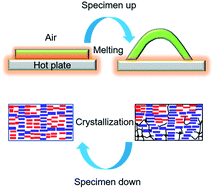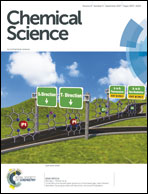A new function for thermal phase transition-based polymer actuators: autonomous motion on a surface of constant temperature†
Abstract
It is very challenging to make materials capable of autonomous oscillation known in many living systems (such as the heartbeat). Herein, we describe an approach to creating a thermo-mechano-thermal feedback loop for thermal phase transition-based polymer actuators, which leads to hour-long, autonomous motion on a substrate surface of constant temperature. We investigated the variables that determine the amplitude and period of the motion, and demonstrated exemplary physical work powered by direct thermomechanical energy conversion. Such continuous motion of a solid polymer driven by thermal energy without the need for temperature up/down switching is unprecedented, and the validated feedback loop can be implemented into other thermal phase transition-based polymer actuators.



 Please wait while we load your content...
Please wait while we load your content...